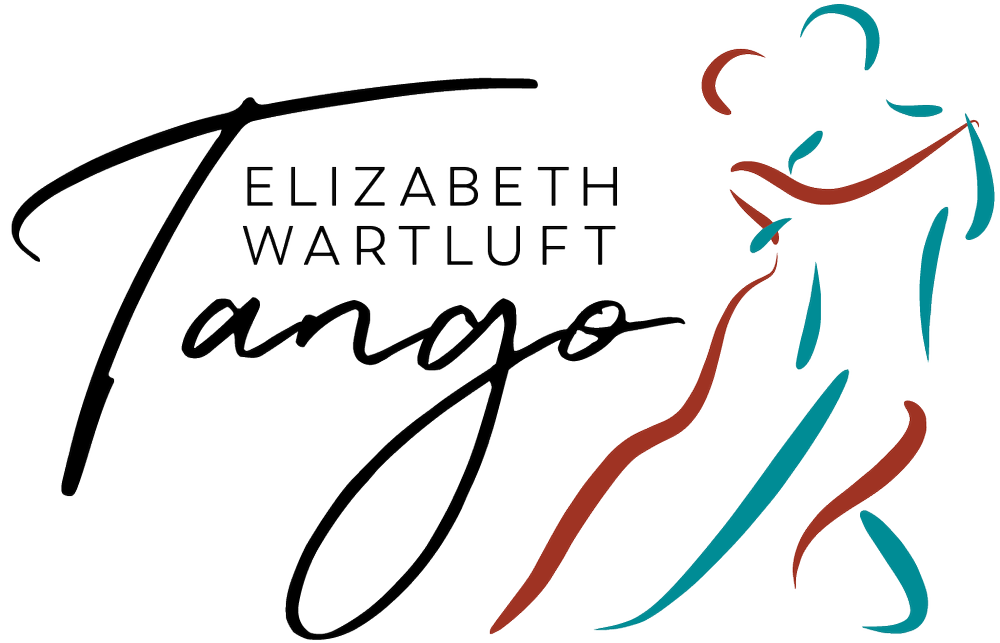“So, you are saying that, when I am an advanced dancer, I will want to work on walking??”
Last week for my birthday, I taught my favorite things to teach: mainly, walking and musicality. Usually, I try to mix the fundamentals with more flashy steps, to have a carrot dangling in front of noses as we slog through the needed drills and practice that make a good dancer. However, I took a week off to give the kind of class I take when in Buenos Aires.
Walk this way!
Have you ever thought about how many ways you can walk? When I ask a private student to list the ways they can walk, here is the list that I usually get:
forward
backwards
parallel or crossed system
Here is the list that a student and I made yesterday:
forward, back or side steps
parallel or crossed systems
on the beat, syncopated, slow motion, or with pauses.
in a straight line or curved (circulos)
walking normally (some people call this on the outside), in the center (some people call this regular position), or on the closed side of the embrace.
What constitutes a walking step?
In addition, there are moves that could be included as walking patterns because they have only straight lines but might not be strictly walks. I don’t know if I personally call these walks, but they might be in your book:
vaivens: regular, crossed, and zigzag
traveling turns (some people count these as turns, some as walks/traveling steps)
traveling steps with traspies: traveling traspie in milonga, stutter steps,
crosses: forward or back or lateral
salida/regresa
ocho cortados that are not “the” ocho cortado, which has pivoting in it.
I encourage all dancers who lead to make lists of the moves that they know, and then to group them into categories, and into sub-categories, nesting the variations in a drop-down menu style. This helps you to find them in your head while dancing and thus actually USE the moves you know more. It also asks you to dive deeper into your technique and think about WHY moves are related and how YOU categorize moves. Believe me, there is no “correct” version of this: everyone’s brain works differently.
How can you make your tango walk more interesting?
Play with the music!
If you generally walk on the beat, practice walking slow motion. Practice adding in corridas (synocopated walks). Practice pausing in your walks. If you can’t hear anything in the music except the beat, this will take some time; but all those elements exist in every tango song! Some suggest more syncopation or more slow motion, but tango music is complex, and you can tease out all sorts of shades of musicality if you know the song. Don’t listen to people who tell you that stepping on the beat is the goal. Send them to me to convince them otherwise. :-)
Play with direction!
If you usually walk only forwards, consider doing a half traveling turn or another strategy to turn 180 degrees, and walk backwards (or backwards against line of dance but that is dangerous). Practice using side steps. Think about turning a quarter turn to face in or out of the dance floor and use lateral steps DOWN the dance floor!
Play with circulos!
Circulos will feel too big for the dance floor at first, so remember you must use contrabody to BOTH SIDES to walk in a circle, just as you do when walking in a straight line down the street, and the circulo will become smaller. What’s the bonus of adding circulos? Variations:
clockwise or counterclockwise
leader walking forward and follower back; or follower walking forward and leader back.
parallel or crossed system
different speeds
Play with parallel and crossed systems!
Many dancers never play in between parallel or crossed systems. Explore and discover variations you have not tried before.
Play with position!
Many people approach position as something fundamentally right or wrong. There are ways to move that are better for the body, but no one correct “tango” position. Try dancing on the closed side of the embrace in crossed system (don’t forget your contrabody or this will be difficult). If you are a center-style dancer, work on your contrabody so that you can walk in a straight line. If you what I call a “normal” offset dancer, keep your contrabody going when you walk and touch the inside of the follower’s foot instead of the outside. Just make sure the FOLLOWER can go in a straight line: don’t make them waddle please!!
Go out and conquer!
Remember, the best compliment you can get from an old milonguero/a is: “You walk well,” not “What great boleos!” Go out there and walk!!

